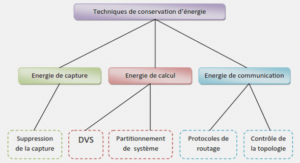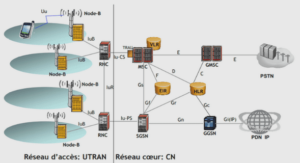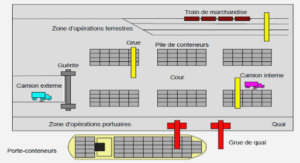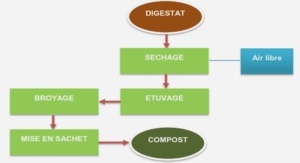In past decades, wrought aluminum alloys are widely used in many industrial fields because of the high strength-to-weight ratio, great corrosion resistance and relatively low cost. Currently, the development of automobile and aerospace industries promote the demand of aluminum alloys that possess competitive properties at elevated temperatures(250℃-300℃). For precipitation strengthening wrought aluminum alloys, such as 2xxx, 6xxx and 7xxx alloys, they can have high strengths at temperatures up to 100℃ due to the fine and uniformly distributed precipitates formed during the heat-treatment[2]. However the mechanical properties of these alloys decline rapidly due to the coarsening of the precipitates (overaging) at elevated temperature[3, 4]. Therefore, developing low cost aluminum alloys that function well at elevated temperature is particularly attractive for industries.
Al-Mn 3xxx alloys are one of the widely used commercial aluminum alloys, which have been used in many industrial sectors, such as architecture and packaging industry. 3xxx alloys are generally strengthened by work hardening and classified as non-heat treatable alloys[5, 6]. However, recent research found out that 3xxx alloys can form a considerable amount of dispersoids during heat treatment, which can contribute to the strength at elevated temperature[7-11], providing the possibility for 3xxx alloys for the elevated-temperature applications
As the principal alloying element in 3xxx alloy, Mn can dissolve and form supersaturated solid solution in aluminum matrix after solidification. During the heat treatment, the dispersoids form from the decomposition of the Mn solid solution. Many research have studied the precipitation behavior of the dispersoids in 3xxx alloys[5, 9, 10, 12-15]. The type of the dispersoids varies with alloy composition and heat treatment. Al6(MnFe) phase tends to precipitate with low Si content and high temperature, while α-Al(MnFe)Si prefers to precipitate with high Si level and low temperature[16-18].
The α-Al(MnFe)Si dispersoids is reported to have strong influence on the recovery and recrystallization of aluminum alloy [19, 20]. It is also reported to have a considerable effect on mechanical properties in 3xxx alloys[10, 17, 21]. The work of Liu et al.[11] shows that the dispersion strengthening effect provide by α-Al(MnFe)Si dispersoids can be achieved by the precipitation treatment, and have significant improvement on the YS and creep resistance at 300℃. Meanwhile, the α-Al(MnFe)Si dispersoids are approved to be thermally stable at 300℃.
However, recent research shows that the precipitation of dispersoids become less and coarse after homogenization, which is a necessary industrial high temperature treatment (450℃-600℃). Meanwhile, the diffusion of Mn to the primary intermetallic Al6(MnFe) as well as the increasing of dispersoid free zone(DFZ) at high temperature lead to the decreased properties [13, 22]. To solve this problem, possible elements, which have low diffusion rate and to form potential dispersoids under higher temperature can be added, and Mo is one of the candidates[23, 24].
Elevated temperature applications of aluminum alloys
In past three decades, aluminum alloys have been developing for the application at the elevated temperature range from 250 to 350°C. Precipitation hardening aluminum alloys can’t keep their high strength at elevated temperature due to the coarsening of the precipitates (overaging). Therefore, developing a low-cost, thermal stable aluminum alloys for elevated temperature applications is always attractive in industries, such as automobile and aerospace industries.
Dispersion strengthening is reported to be a significant mechanism to improve the elevated temperature mechanical properties of aluminum alloys[8, 23, 25, 26]. Therefore, potential alloys that can form a large amount of thermal stable dispersoids during heat treatment are always the candidate for elevated temperature applications. To reach this goal, the alloying elements acting as dispersoid former should have moderate solubility in liquid aluminum and low solubility as well as low diffusion rate in solid aluminum. With relative high solubility in liquid aluminum, they can be added with a large amount and form supersaturated solid solution after rapid solidification. During heat treatment, with the decomposition of the solid solution, they can precipitate out a high volume fraction of dispersoid phase if these elements also have low solubility in solid aluminum. If these dispersoids have good thermal stability, their presence is desirable and will contribute to the mechanical properties by blocking the movement of dislocations and decrease the spacing between particles by increased secondary phase volume fraction.
Many aluminum alloys, such as Al–Fe–Ce, Al–Fe–V–Si, Al–Fe–Mo(–V), Al–Cr–Zr-(–Mn), Al–Ti–Fe, etc. have been successfully developed for elevated temperature applications by the rapidly solidified powder metallurgy (RS P/M) process. All these alloys are based on Al-TM (TM=transition metal) type systems, and the elevated temperature strength of these alloys derives from the presence of a large (15 to 35%) volume fraction of fine and stable intermetallic dispersoids[27]. These alloys have been received great attention because they possess much better high temperature strengths compared to conventional aluminum alloys, and also exhibit the potential to replace titanium alloys used in aerospace in the temperature range from 250 to 350°C.
|
Table des matières
1 Introduction
1.1 Definition of problem
1.2 Objective
2 Literature review
2.1 Elevated temperature applications of aluminum alloys
2.2 Al-Mn 3xxx alloys
2.2.1 The effect of alloying elements
2.2.2 The evolution of constituent particles during heat treatment
2.2.3 Dispersoid particles and their evolution in Al-Mn-Si 3xxx alloys
2.3 Effects of Mo addition on properties
3 Experimental procedure
3.1 Alloy preparation.
3.2 Heat treatments.
3.3 Microstructure observation
3.4 Electrical conductivity
3.5 Microhardness
3.6 Mechanical properties test
4. Results and Discussion
4.1 Effect of Mo additions on as-cast properties
4.1.1 Microstructure
4.1.2 Microhardness and electrical conductivity
4.2 Evolution of microstructure and properties during heat treatment
4.2.1 Microstructure evolution during precipitation treatment
4.2.2 Effect of Mo on the evolution of properties during precipitation treatments64
4.2.3 Effect of precipitation treatment parameters on the evolution of properties69
4.3 Creep resistance and long-term thermal stability
4.4 Preheating treatment
5. Conclusion
![]() Télécharger le rapport complet
Télécharger le rapport complet






